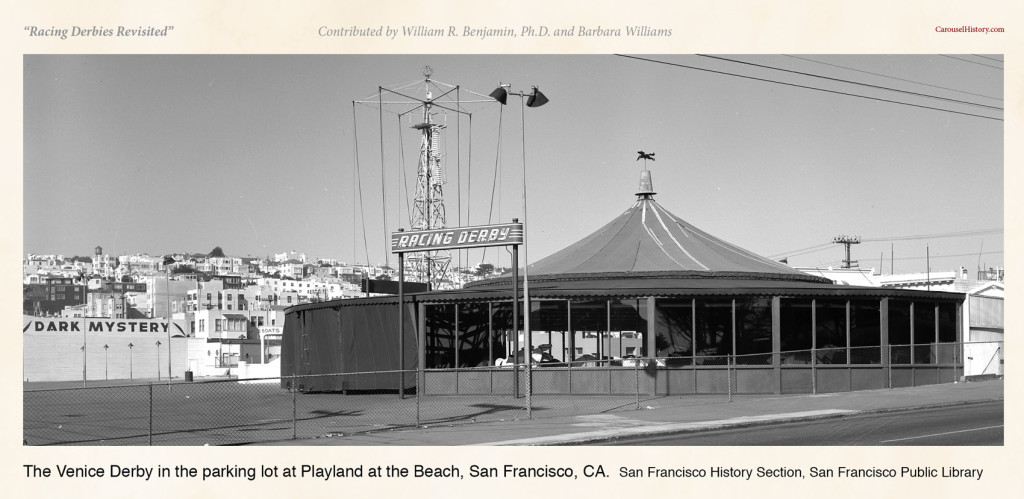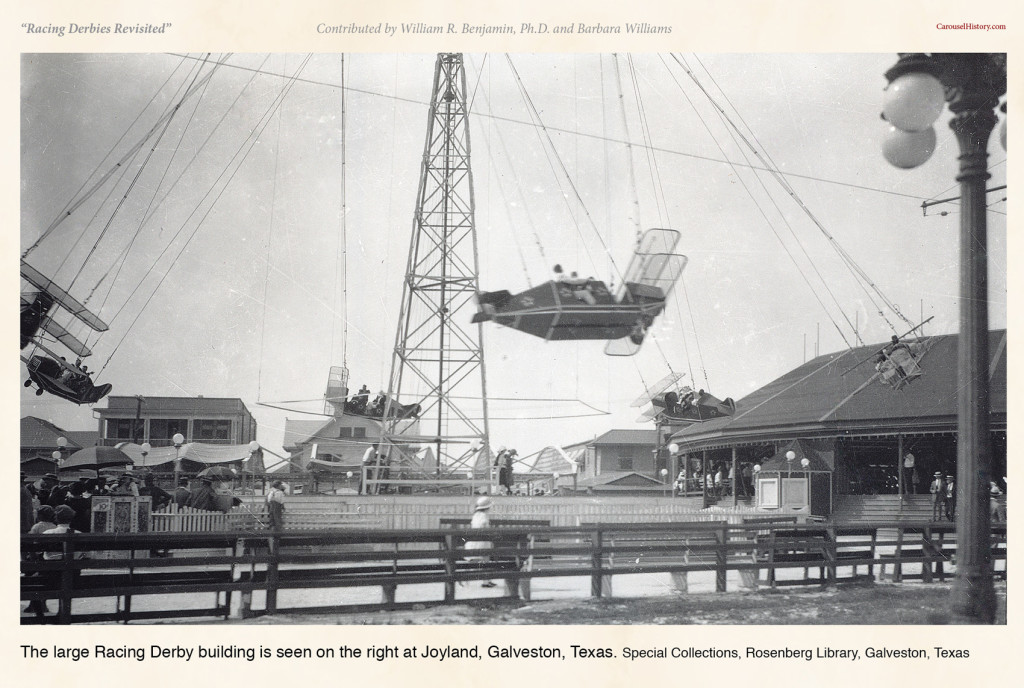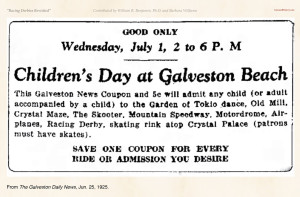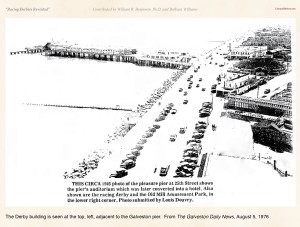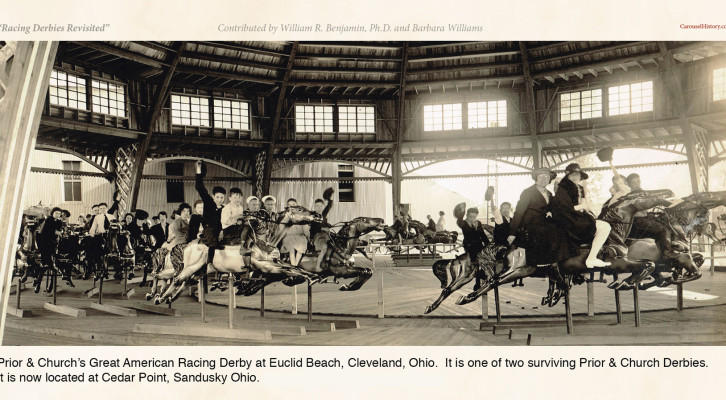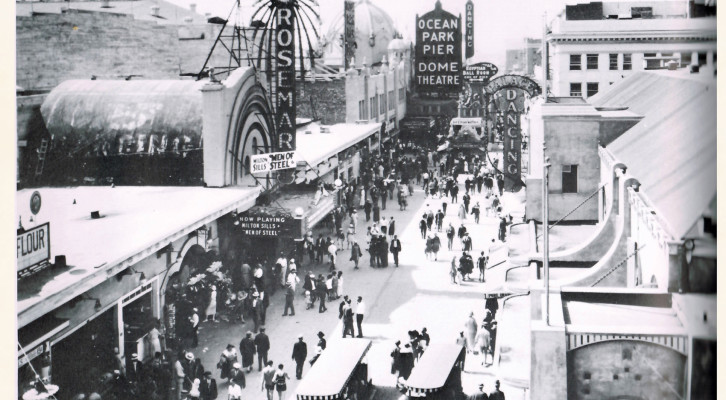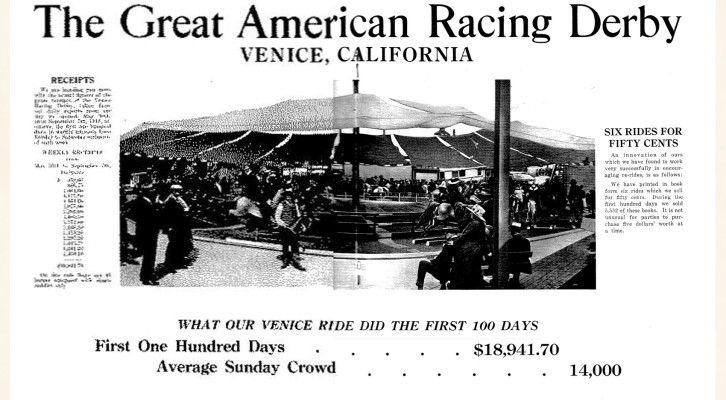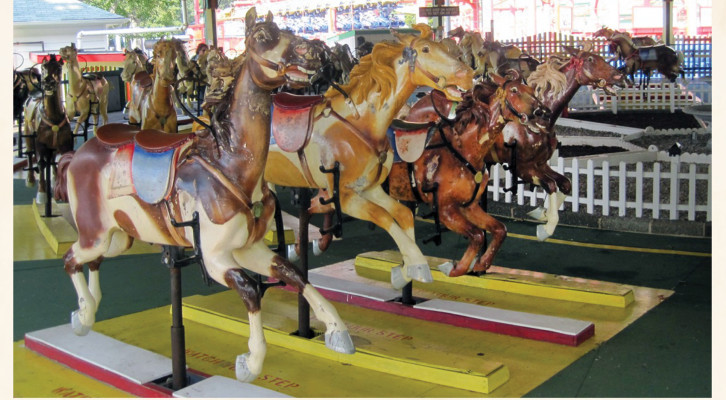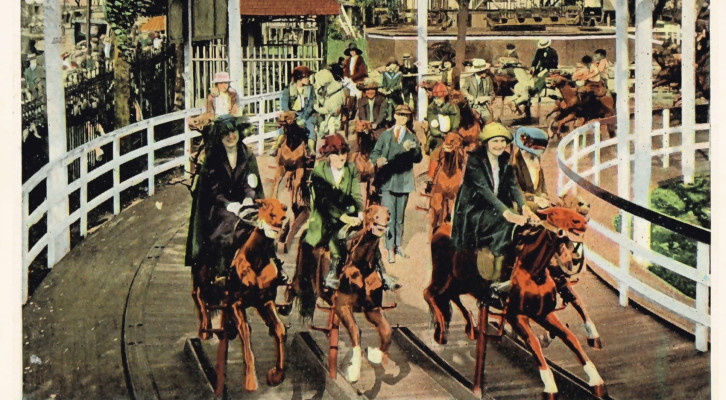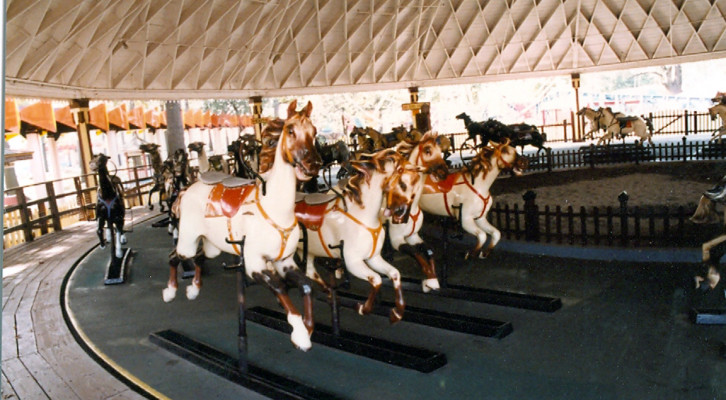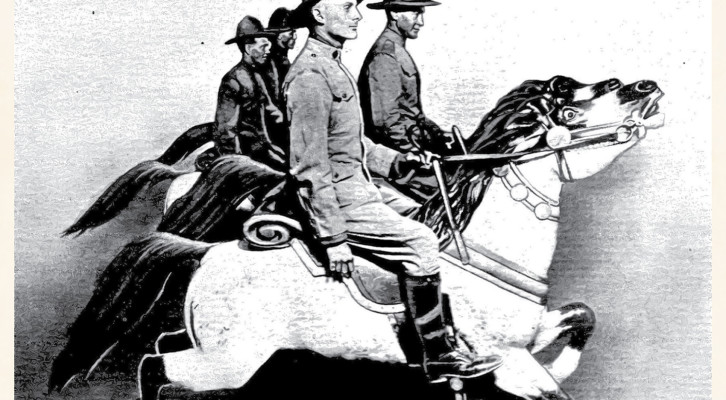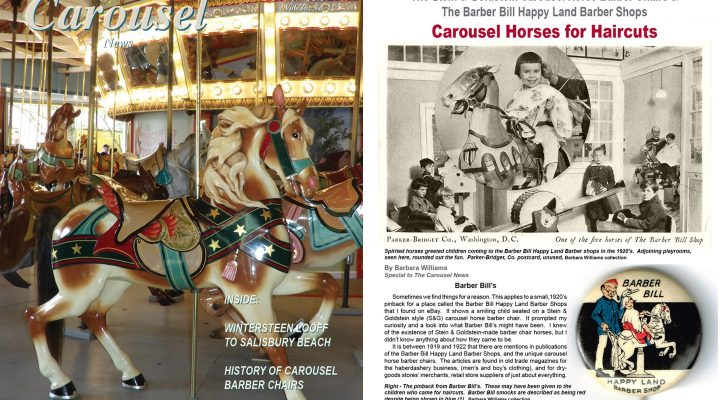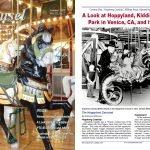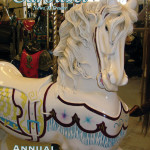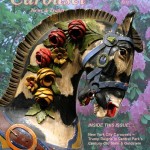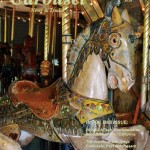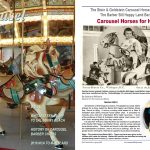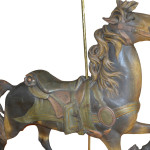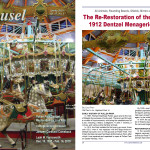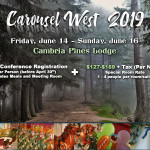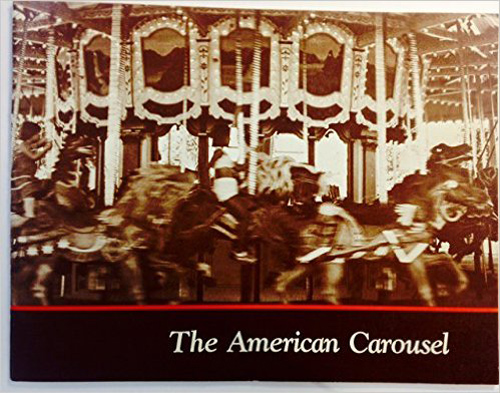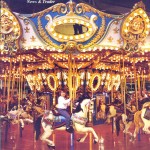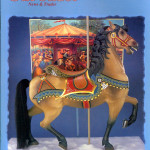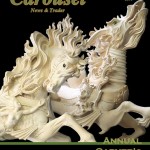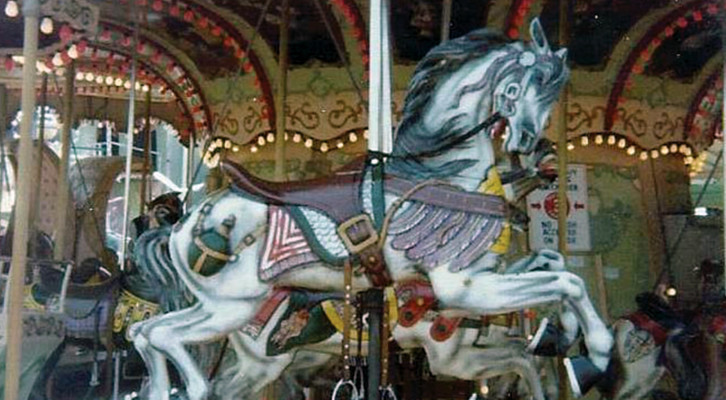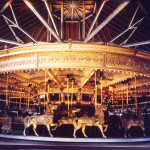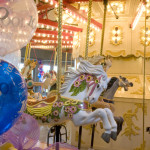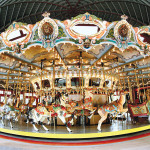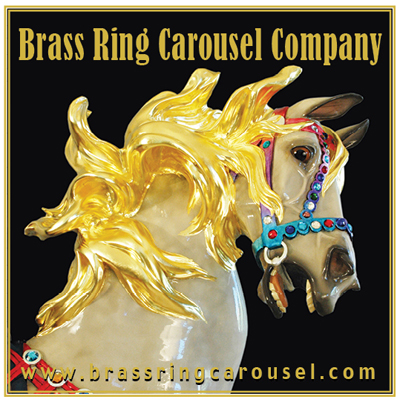Racing Derbies Revisited – Part 4
Venice Racing Derby to San Francisco’s Playland, Galveston Derby at Joyland
The Second Venice Derby Relocated to Playland at the Beach, San Francisco
From Mike Winslow, Playland historian –“My research has lead me to believe the (Playland) Racing Derby survived the (1951) fire and continued to operate till about 1953 or so. Apparently, the Racing Derby wasn’t that easy to move and the lot it sat on fell into disuse. Most attractions on the same lot were moved to lots closer to the beach, but the Derby was left behind. That lot became used for more parking. The Derby fell out of interest being by the parking lot and was closed. The building was then used for storage until all the Playland property was sold in 1969. The Derby building was destroyed in 1970. Today, the Derby site is part of the parking lot for a Safeway (grocery store)(40).”
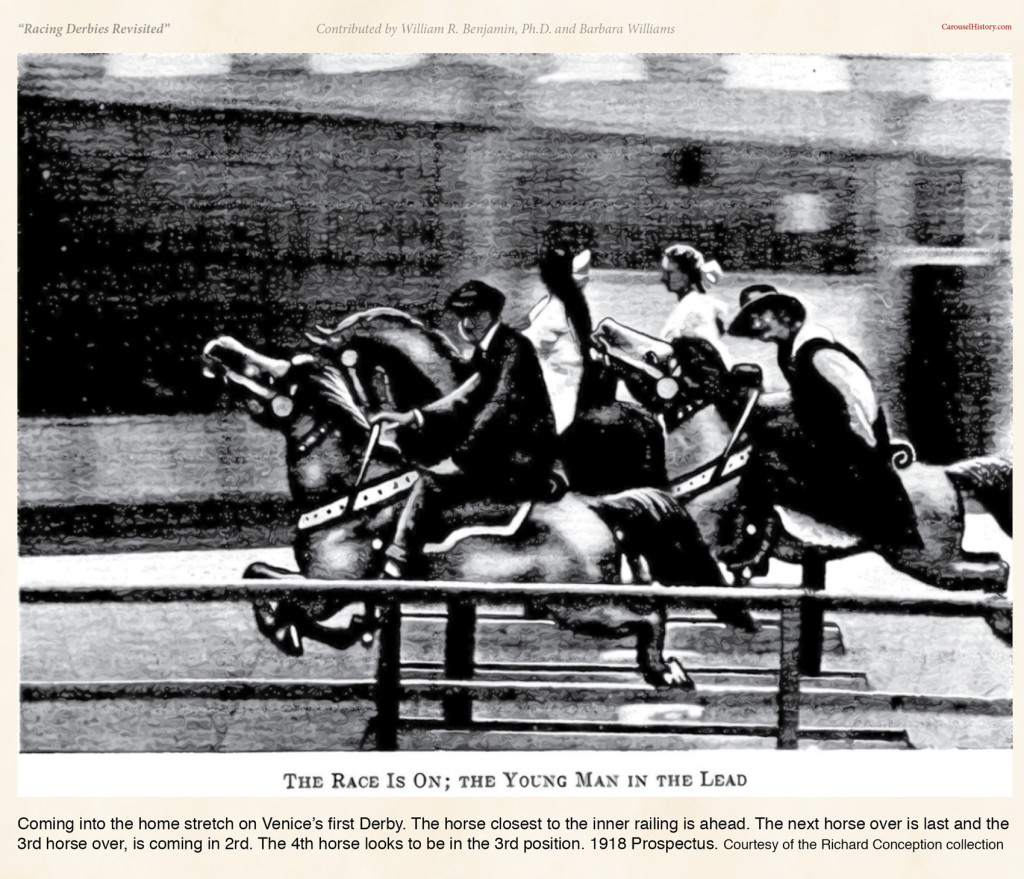
Coming into the home stretch on Venice’s first Derby. The horse closest to the inner railing is ahead. The next horse over is last and the 3rd horse over, is coming in 2rd. The 4th horse looks to be in the 3rd position. 1918 Prospectus.
Racing Derby Operation
The Racing Derby had a novel and unusual mechanism of operation. The Derby platform revolved and the horses moved up and down.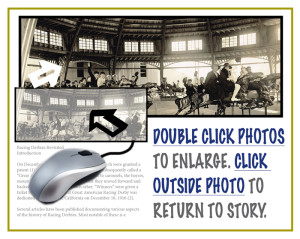 Originally, additionally, the horses were pulled back and forth in the slots by a crisscrossing network of cables underneath the platform with one horse in each set slightly ahead of the other three at the end of the ride. This was the “winning” horse. Top speeds were/are between 15 and 25 MPH.
Originally, additionally, the horses were pulled back and forth in the slots by a crisscrossing network of cables underneath the platform with one horse in each set slightly ahead of the other three at the end of the ride. This was the “winning” horse. Top speeds were/are between 15 and 25 MPH.
At the first Venice Derby, a pistol shot signaled the start of the “race” when the revolving platform reached full speed. The clutch was engaged, starting the horses’ motions. “They’re off!” megaphoned the operator. The horses raced, one in each group ultimately pulling ahead, the others dropping back. A gong signaled as the end of the race neared – “Last lap!” Another pistol shot marked the end of the ride. The winning riders in each group were given re-ride tickets (34).
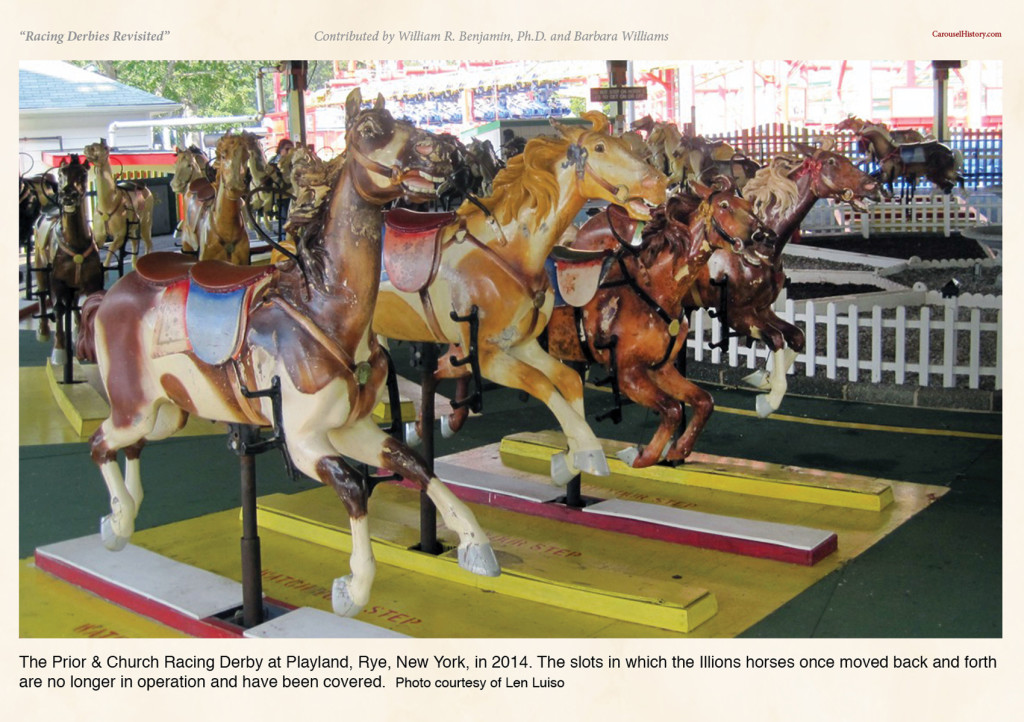
The Prior & Church Racing Derby at Playland, Rye, New York, in 2014. The slots in which the Illions horses once moved back and forth are no longer in operation and have been covered. Photo courtesy of Len Luiso
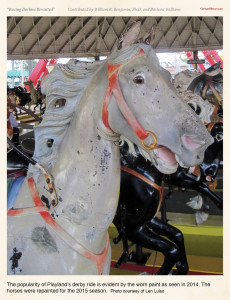
The popularity of Playland’s derby ride is evident by the worn paint as seen in 2014. The horses were repainted for the 2015 season. Photo courtesy of Len Luiso
The use of pistols and megaphones clearly separates the historic method of operation from that of the present-day operating Derbies. Len Luiso, shares his experiences of riding the Rye, NY Playland Derby –
“To the best of my memory there were 2 operators (could have been 3). They walked around and gave instructions and to insure there was proper foot placement – very important. The centrifugal force will throw you off if your feet are not placed correctly. They also jump on and off during the ride. Any misstep and it could be a disaster. The ride is very loud and I would compare it to the hum of a coaster or the Whip. There was a bell to start the ride and a PA system to instruct the riders if they were not sitting correctly. I don’t know if I could describe the sensation difference when the chains were working – it was a little more fun. Most riders do want to sit on the outside…the best thrill. You cannot be weak, you have to hold on. My arms were tired after the ride.”
The chains that move the horses back and forth are still in operation at Cedar Point, Sandusky, Ohio.
Galveston Beach Racing Derby
C.E. Barfield, a Georgia amusement operator, with an address in Galveston, TX announced in the July 17, 1920 issue of The Billboard that he had obtained “territorial rights” from Prior and Church for the “Great American Racing Derby” in eleven states; Texas, Virginia, North and South Carolina, Georgia, Florida, Alabama, Mississippi, Louisiana, Kentucky and Tennessee. Of all of these states, we have only found evidence that a Racing Derby was built at Galveston Beach, Galveston, TX. This Derby opened on May 27, 1920 at Joyland Park (41). “Built along the lines of a merry-go-round, the derby is more than six times as large as the largest merry-go-round. The wooden horses, which are the size of real ones, gallop around the mammoth track at great speeds. A special safety device reduces the danger to a minimum so that children might ride alone on safety on the wooden steeds (42).” The nature of the special safety device isn’t known.
In 1921, Barfield, listed as president of the Galveston Beach Association, claimed to have $90,000 invested in Galveston including the Racing Derby (43) which is said to have been the fifth one constructed in the United States (44). The Derby was initially located at 21st and Seawall Boulevard (45). An advertisement coupon from 1925(46) shows the wide range of amusements at Galveston Beach. An accompanying article indicated that “1,370 kiddies rode the racing derby” on that summers’ first Children’s Day at the Beach.
This Racing Derby was moved to a new location at 25th and Seawall Boulevard in 1928 (47). An attempt was made to burn the Derby in 1934 “… housing the wooden horses and on the floor were strewn oil and gasoline soaked rags. Police who investigated were attempting to find a clue to the firebug’s identity…” (48). The Derby was ultimately dismantled and the horses moved to the Hollywood Dinner Club in Galveston, which burned in 1959, destroying the horses. In an article about the fire, Toni Noel a former local resident is quoted “I still mourn its passing. Nowhere in the country have I seen a carousel comparable to the racing derby that used to operate at 25th and Boulevard… those wondrous towering steeds with their flaring nostrils and flying forelocks (49).”
Derby-Like Rides
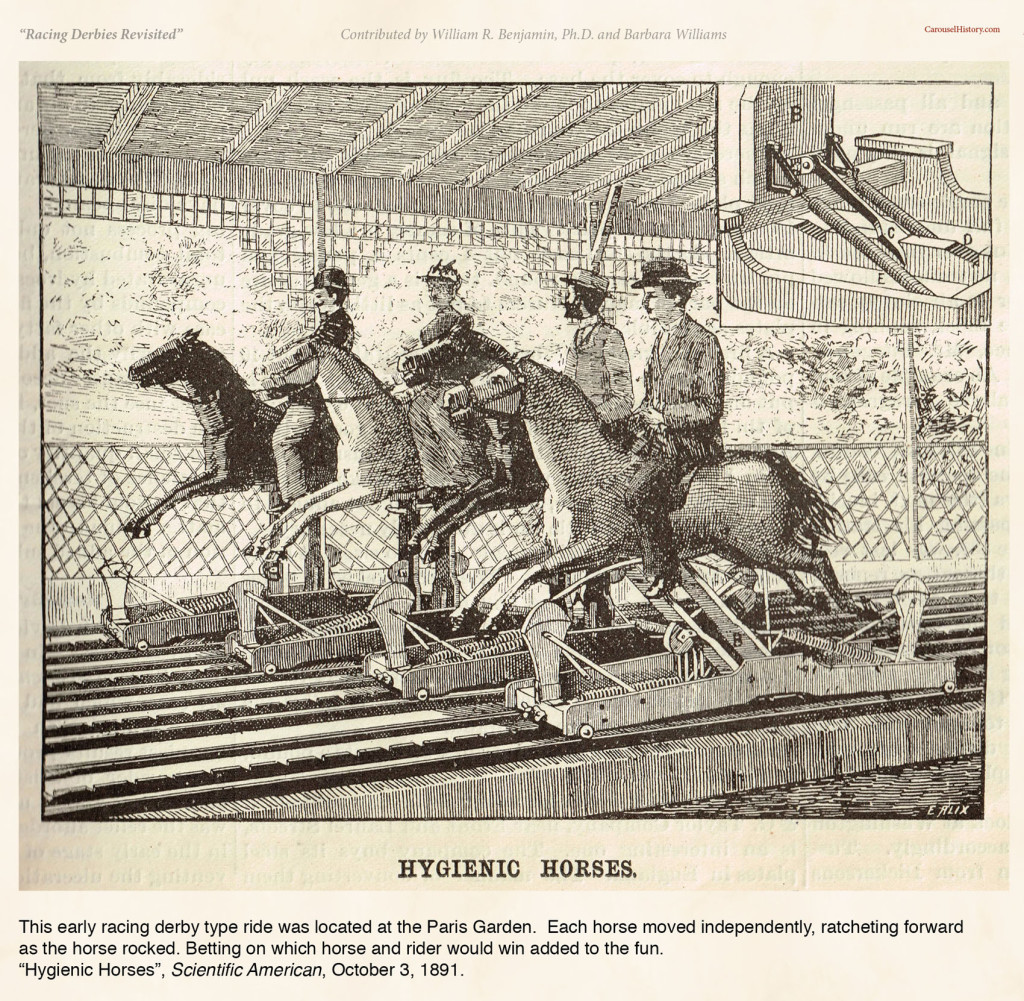
This early racing derby type ride was located at the Paris Garden. Each horse moved independently, ratcheting forward as the horse rocked. Betting on which horse and rider would win added to the fun. “Hygienic Horses”, Scientific American, October 3, 1891.
The Derby and Steeplechase rides arose out of the popularity of children’s rocking horses and real live horse racing (50). What makes horse racing one of the all-time, most popular spectator sports is the speculative wagering on which will be the winning horse (51). By transferring the horse-race concept to a scaled-down, mechanical ride, unskilled riders could experience the thrills of horse racing at favorite fun spots and, hopefully, be on a “winning” horse.
One of the earliest mechanical race courses was operated in Nice, France, in 1892 by M. Salle and consisted of a series of circular tracks arranged in a large building. The natural-size hobbyhorses were mounted on light wheels to which electric motors were attached. Current was led to the motors from a third rail laid in a conduit.”
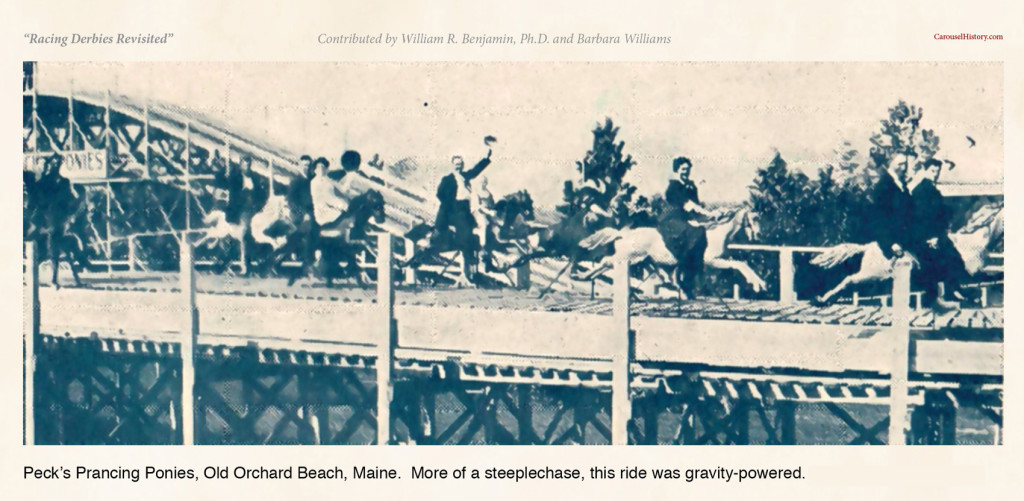
Peck’s Prancing Ponies, Old Orchard Beach, Maine. More of a steeplechase, this ride was gravity-powered.
Another Derby-like ride was Peck’s Prancing Ponies, patented by Charles F. Peck in 1909 (52). It was steeplechase-type, outdoor, gravity-powered 4 track ride, classified as a coaster (53). The patent describes the ride: “The invention…will give the passenger a rocking motion similar to that which is obtained by riding a horse without injuring the person or any undue jarring during the manipulation of the device.”
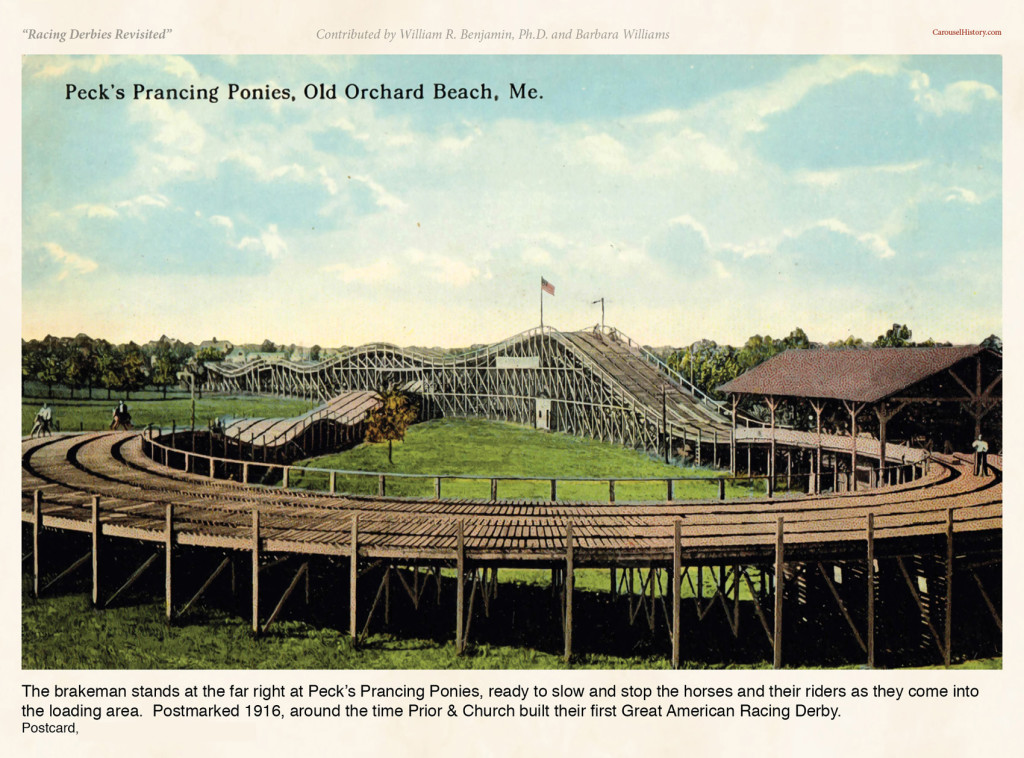
The brakeman stands at the far right at Peck’s Prancing Ponies, ready to slow and stop the horses and their riders as they come into the loading area. Postmarked 1916, around the time Prior & Church built their first Great American Racing Derby.
William F. Mangels, a noted and prolific amusement park ride builder and expert, talked about horse-race type rides in his book, The Outdoor Amusement Industry, 1952, Vantage Press.
“Numerous attempts have been made by inventors to develop a mechanical race course that would in some degree simulate a real horse race as an amusement device. The usual pattern consists of a group of hobbyhorses mounted on wheels and propelled electrically on tracks laid over an oval course. The speed of the horses, more or less, is controlled by the riders. Early attempts to produce this device were made by Shafhirt in 1894, Brown in 1903, May in 1908, Ricks in 1912 and Illions in 1920, but none have survived.”
We don’t know how this information relates to the complete history of Derby-like rides. Two additional rides worth mentioning are the Derby’s famous first cousin, the historic Steeplechase ride at Coney Island, and the operating Racing Derby at Blackpool in the U.K. which is not a Prior and Church ride. Despite lack of survival of the horse racing rides, as described by Mangels, they were enormously popular during their hey-day.
Racing Derbies Revisited….
Contributed by William R. Benjamin, Ph.D. and Barbara Williams
<<< PREVIOUS – NEXT >>>
PART 1 – PART 2 – PART 3 –
PART 4 – PART 5 – PART 6 –
SUMMARY OF RIDES
<<< PREV – PART 1 – PART 2 – PART 3 – PART 4 – PART 5 – PART 6 – RIDES – NEXT >>>

